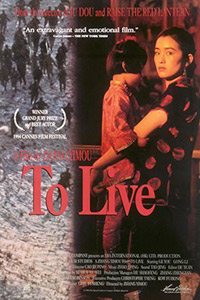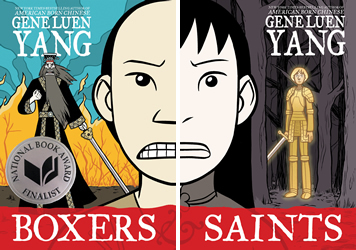https://nunm.edu/2019/06/ccm-vs-tcm/
Chinese Medicine in Early Communist China, 1945-1963: A Medicine of Revolution (Needham Research Institute Series) 1st Edition
Chinese Medicine in Early Communist China, 1945-1963: A Medicine of Revolution” is a book that looks at the transformation of Chinese medicine from a marginal, side-lined medical practice of the early twentieth century, to an essential and high-profile part of the national health-care system under the Chinese Communist Party. The book analyzes the political, economic and social motives which drove this promotion and explores the extraordinary role that Chinese medicine was meant to play in Mao Zedong’s revolution.
"Modern traditional Chinese medicine(TCM) is a distillation of ancient concepts that have been systematically developed. Today, we use the term 'TCM' extremely loosely, without any temporal or spatial boundaries such as history or geography. However, this term appeared at a specific historical moment, and the epistemological background that formed it is also clearly present. Using the term TCM in a non-historical way is a misunderstanding of the cosmology it represents. TCM is the name of the medicine promoted by the Chinese Communist Party as a state-led medicine. This medicine is performed within state institutions, and its perspective is organized within official textbooks. The institutionalization and standardization of traditional Chinese medicine define the characteristics of Communist China's traditional medicine, and therefore, the 'TCM' that we refer to today only functions within these established factors."
The above excerpt is from the introduction of a book. Kim Taylor traces the essence or origin of TCM from a historical perspective in her book "Chinese Medicine in Early Communist China, 1945-63: A Medicine of Revolution." The book's important premise is that modern TCM is not a continuous tradition inherited from the past but rather a deliberate distillation of ancient concepts according to the state's directives in the 20th century. In particular, she believes that this manipulation began in the early years of the Chinese Communist Party's reign (1945-64).
The author argues that if there had been no deliberate manipulation by the Chinese Communist Party, TCM would have existed very differently from today. It is a well-known fact that healthcare systems have evolved in line with changing societal demands throughout history, regardless of country. However, what is unique about China is that it was established to resist Mao Zedong's strong anti-western scientific power.


Birth of "Traditional Chinese Medicine"
The period between 1953 and 1956 was an important time for the institutionalization of Traditional Chinese Medicine (TCM). This period saw the Chinese Communist Party officially institutionalize Chinese medicine by establishing four TCM schools since the reintroduction of Mao's revolutionary plans for Chinese medicine.
However, the author does not see these two events as necessarily related. The institutionalization was not the original goal of Mao's revolution.
The initial intention of the Chinese Communist Party was to modernize Chinese medicine to a level where it could be unified with Western medicine, rather than preserving it as it was. This was achieved through the "Western doctors learns from traditional medicine" program.
In 1954, the Ministry of Health suddenly found itself responsible for implementing an unusual program called "Western doctors study traditional Chinese medicine." With this program, traditional Chinese medicine, which had been dependent on Western science until then, dramatically reversed its status and for the first time took the upper hand. However, this program produced results different from the original intent of raising traditional Chinese medicine to a certain level within a few years. Traditional Chinese medicine became an important political topic as it was used as a means of verifying loyalty to the regime.
Modernization and Creation of Traditional Medicine
While "Chinese medicine" and "Traditional Chinese Medicine (TCM)" are both translated as "zhongyi" in Chinese, the English expressions for them are different. The Chinese Communist Party used the term "Chinese Medicine(zhongyi)" to promote a form of medicine that could express the purpose of the new regime. In order to show the clear difference between the past "ancient medicine" and the Communist Party's "new" and "improved" "zhongyi," the terms "ancient medicine" and "medical heritage" were introduced in 1955.
In 1959, it was decided to create a national textbook to standardize traditional Chinese medicine (TCM) knowledge and establish TCM in a consistent form. The curriculum was divided into 15 subjects, combining traditional and new subjects. The traditional subjects included medical classics, the history of Chinese medicine, Neijing (The Inner Canon), Shanghanlun (Treatise on Febrile Diseases), Wenbing (Warm Diseases), various medical theories, and medical cases. The subjects for training specialized skills included herbology, acupuncture and moxibustion, and prescription-making. The new subjects covering TCM included TCM diagnosis, internal medicine, surgery and traumatology, gynecology, pediatrics, ophthalmology, and otolaryngology.
These new subjects were closely related to Western medicine. They were designed to demonstrate that TCM could play an identical role in all fields of Western medicine. The application of specialties was the same even in TCM hospitals.
To the world and the Distortion
In 1972, a TCM journal was founded in the United States, and in 1973, China obtained membership in the World Health Organization. As the New Age movement of the 1960s and 1970s emerged, TCM was also blended into the spirit of the movement. Related documents were filtered in the process of translation, and since those who made the textbooks were ignorant of the original context in which they were created, TCM had to undergo cultural distortion.
As Western scholars gained direct access to information, books on TCM basic theory were published successively to help Westerners understand it. Manfred Porkert, Ted Kapchuck, Nathan Sivin, and Giovanni Maciocia are representative authors. They aimed to systematically introduce TCM theory while criticizing the decline of introductory materials.
This educational system included basic education on traditional classics as well as a modern approach to disease, which aligned well with the prevailing interest at the time in combining theory and clinical practice.
The first national textbook was published in 1960, and this newly regulated medicine was now referred to as TCM. All textbooks published between 1960 and 1961 were published by the People's Health Publishing House, confirming that TCM was a product of public health. Here, the issue we should consider is what kind of materials the scholars of the time used to construct a consistent TCM theory. They based their understanding on textbooks such as "Introduction to Traditional Chinese Medicine" and "New Edition of Introduction to Traditional Chinese Medicine," which were created for the "Teaching TCM to Westerners" program. In other words, they did not convey the true basic TCM theory, but rather understood TCM theory based on textbooks that were reconstructed to suit Western scientific tastes, and passed on this understanding as it was.
Chinese pattern diagnosis
The systemization of TCM theory is another characteristic of Communist China. The theory had to be politically appropriate above all else, and all scientific exploration in revolutionary society had to follow the Marxist philosophy of dialectical materialism. In medicine, dialectical materialism gave rise to a new diagnostic technique called "dialectical medicine."
Dialectical medicine was a diagnostic technology designed to meet the standard norms demanded by a particular period's political environment. However, by reducing the theory to several easily recognizable "证" (zhèng), or patterns of disharmony, and designing most of these patterns to be interrelated with Western medical disease categories, the vast depth of TCM theory was greatly eroded.
Today, in most cases, a patient's pattern of disharmony is already determined before they even enter the examination room. For example, in dermatology, doctors have already memorized the diseases of acne, herpes zoster, psoriasis, and more. Medicine is becoming increasingly formalized. To identify common symptoms that can occur with edema, one only needs to look for the edema section. Once a symptom such as dysmenorrhea is identified, the corresponding prescription can be found, and treatment is completed. But is clinical medicine really that simple?
현대 중의학은 고대의 개념이 계획적으로 증류된 것
“오늘날 우리는 ‘중의학(TCM 혹은 Traditional Chinese Medicine)’이라는 용어를 역사나 국경과 같은 시공간적 구분 없이 극도로 느슨하게 사용하고 있다. 그러나 이 용어는 특정한 역사적 순간에 출현하였으며, 그것이 형성된 인식론적인 배경 역시 명백히 존재한다. TCM이라는 용어를 몰역사적으로 사용하는 것은 그것이 나타내고자 하는 지식체계를 잘못 이해하는 것이다. TCM은 중국공산당이 진흥시키고자 하는 의학의 명칭으로서 국가 주도의 의학이다. 이 의학은 국가 기구 안에서 수행되고 그 지식체계는 공식적인 교과서 안에서 조직된다. 중의학의 기구화와 표준화는 곧 공산주의 중국하의 중의학의 특징을 규정하며, 따라서 우리가 오늘날 일컫는 ‘중의학(TCM)’은 오직 이러한 설정된 요인 안에서 기능한다.”
위 내용은 책 서문의 일부이다. 킴 테일러는 그녀의 저서 「중화인민공화국 초기(1945~63)의 중국의학 : 혁명의 의학」에서 중의학(TCM)의 본질 또는 기원을 역사적인 시각으로 추적하고 있다. 이 책의 중요한 전제는 현대 중의학을 과거로부터 이어진 연속적인 전통이 아니라 20세기에 국가의 지시에 따라 고대의 개념이 계획적으로 증류된 것으로 본다는 점이다. 특히 이러한 조작이 시작된 시기를 중국공산당 집권의 초기 연간(1945~64)으로 보고 있다.
저자는 중국공산당의 의도적인 조작이 없었다면 중의학은 오늘날과는 매우 다르게 존재했을 것이라고 주장한다. 또한 중국공산당의 적극적인 지원이 없었다면 중국본토에서의 중의학은 자체 사회 내에서 조화롭게 존재할 수는 있었겠지만, 과학의 영역으로 스며드는 데에는 실패했을 것이 자명하며 중국과 달리 전통의학의 영역을 넓히거나 국제적 위상을 높이는 데 전폭적인 지원을 하지 못했던 대만, 싱가포르, 그리고 홍콩 등과 비슷한 상황에 처하게 되었을 것이라 보고 있다.
공산주의 혁명에 포함된 전통의학 쇄신
보건의료체계가 지난 역사 동안 변화하는 사회적 요구에 발맞추어 변화해온 것은 어느 나라를 막론하고 주지의 사실이다. 그러나 중국의 경우는 마오쩌둥이 상정한 강력한 적-서양의학의 과학적 권력-에 대항하기 위해 세워졌다는 점이 특이하다.
서양의 과학적 권력에 대한 대항마를 키우기 위해 마오는 서양의학과 전통의학의 장점을 결합시킨 제3의 의학을 생각해 냈다. 그러나 오랜 내전을 거치며 전통의학 종사자들의 급격한 감소를 겪은 데에다 서양의학에 대한 외경과 공산정권 초기의 구습타파 분위기에 경도되어 전통의학은 상당히 열등한 존재로 인식되고 있었다.
마오는 이러한 전통의학을 쇄신하여 서양의학과 결합 가능한 수준으로 만들고자 했다. 따라서 그 쇄신은 서양의학체계에 부합하는 형태를 지향하였고, 그 중심에는 과학화와 표준화라는 기치가 있었다. 이렇게 마오의 의지에 따라 공산주의 혁명에 포함된 전통의학은 공산당이 추구했던 새로운 사회를 만드는 데 특별한 기능을 하게 된다.
이후에 이 책의 세부내용을 다루면서 누가 어떠한 목적과 방식으로 어떠한 집단의 의지를 반영하여 이러한 새로운 역할을 만들어 나갔는지, 그리고 혁명적인 목적을 달성하기 위한 경주 속에 전통의학이 어떻게 TCM으로 변화되었는지 살펴볼 것이다. 그리고 우리는 그 과정에서 우리 내부로 시각을 돌려 과연 무엇이 전통의학을 살리는 길인가에 관한 심각한 고민에 직면하게 될 것이다.
.png)
